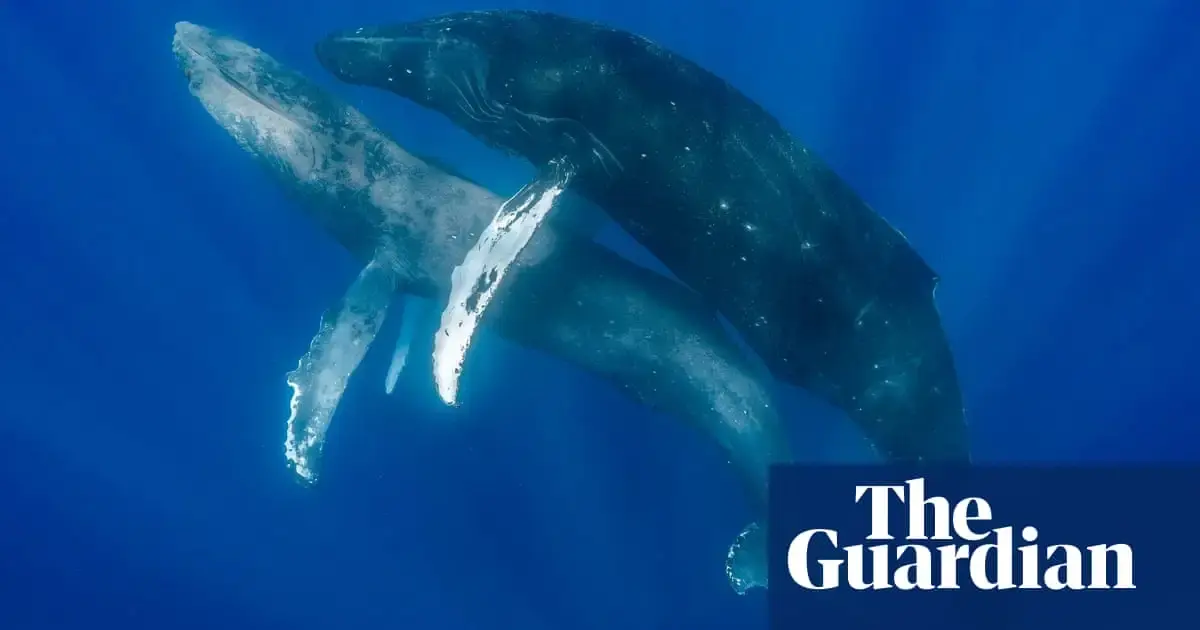The remarkable image of a two-metre whale penis entering another male “leaves little room for discussion that there is a sexual component to such behaviour”, as one whale scientist, Jeroen Hoekendijk at the Wageningen Marine Research institute in the Netherlands, notes drily.
Hehehewww
I dunno, I’m still not comfortable with with linking human queerness with biologism and the natural argument. Other animals also regularly do unsavoury things and those urges might still exist in our biological programming but we have reasoned our way of them them.
I don’t want to accidentally make strange bedfellows with other groups who point at animal behaviours to justify their problematic shit. Such studies on animal sexuality should stay a matter of science, the queer movement should not take them on as political arguments.
Humans are animals, and this shows non-human animals can be queer too.
That doesn’t mean human should tolerate other, more brutal and abusive behaviors, just because other animals have brutal behaviors.
Ultimately it’s a matter of ethics and norms in society. The fact animals have some behavior shouldn’t, alone, be a justification to punish or encourage some behavior.
Humans are animals, and this shows non-human animals can be queer too.
I don’t think it shows anything more than that the animals in question engage in same-sex intercourse. Claiming anything more than that is, to me, arbitrary anthropomorphism. I am not prepared to accept that whales can be “queer” until whales start writing sociological papers for us to find out how they understand homosexuality in their system of norms and values.
The fact animals have some behavior shouldn’t, alone, be a justification to punish or encourage some behavior.
Maybe I’m jumping the gun here, but I’ve been in plenty of discussion already where animals engaging in same-sex intercourse was used as an argument to defend queer rights - e.g. my local queer association did hold such a panel discussion at the zoo last May.
To see this news article in /c/lgbtq_plus instead of /c/biology or /c/science does make me extrapolate that this is somehow understood as being relevant to human sexuality.
I believe it comes about in the context of the common religious statement about gay and transgender folks being “unnatural”. So scientists go to nature and are like, “Look at the animals. They have sex freely regardless of their sexual organs, and some are born with both so they exist between the limited concepts of gender.”
So to me, this argument is a retort against lazy, commonly used, longstanding, nonsense arguments.
You seem to he framing it as, “scientists went to nature to find out how humans should act,” and in my view you are missing quite a lot.
I could be wrong, open to hearing more.
You seem to he framing it as, “scientists went to nature to find out how humans should act,” and in my view you are missing quite a lot. I could be wrong, open to hearing more.
What is important, imho, is what I wrote in my top-level comment: I don’t want to find myself in the same camp as other groups who make “nature” arguments (like “evolutionary psychologists”). If I accept their premise, I will have to accept their conclusions too -otherwise I’d have to be cherry-picking naturalist arguments only when they are politically expedient for me.
So to me, this argument is a retort against lazy, commonly used, longstanding, nonsense arguments.
I believe that this argument is best countered by saying that “regardless of what you think is natural or not, a person has the right to do what they want to do so long as their actions do not violate the freedoms and integrity of others”. That’s a moral value you can reason yourself into and you can be consistent about.
Well said. Pointing to homosexuality amongst other animals is typically a way to refute the argument that’s it’s an unnatural human behavior. It’s not by itself an argument for queer rights.
🤖 I’m a bot that provides automatic summaries for articles:
Click here to see the summary
And in what may sound like a career of cetacean voyeurism, I have also been caught up in a fast-moving superpod of dusky dolphins continually penetrating each other at speed, regardless of the gender of their partner.
That’s why this week’s report of the first scientifically documented male-to-male sexual interactions between two humpback whales off the coast of Hawaii is not surprising.
When the Canadian biologist Bruce Bagemihl published his book Biological Exuberance: Animal Homosexuality and Natural Diversity – listing 450 species exhibiting such behaviour, including whales and dolphins – it was used in evidence in a US supreme court case in 2003 that struck down, as unconstitutional, homophobic “sodomy” laws being used in Texas.
It is telling, too, that the best-known work of literary fiction written about whales, Herman Melville’s 1851 novel Moby-Dick, is a decidedly queer book.
Melville conflates the queerness and diversity of his characters – his narrator, Ishmael, is declared married to his shipmate, the multi-tattooed Queequeg, based on a Māori warrior – with the mysterious sensuality of the whales he is describing.
Slipper shells stuck together on the beach, which you might find when beachcombing, are in fact changing sex, from female at the bottom to male at the top.
Saved 78% of original text.




